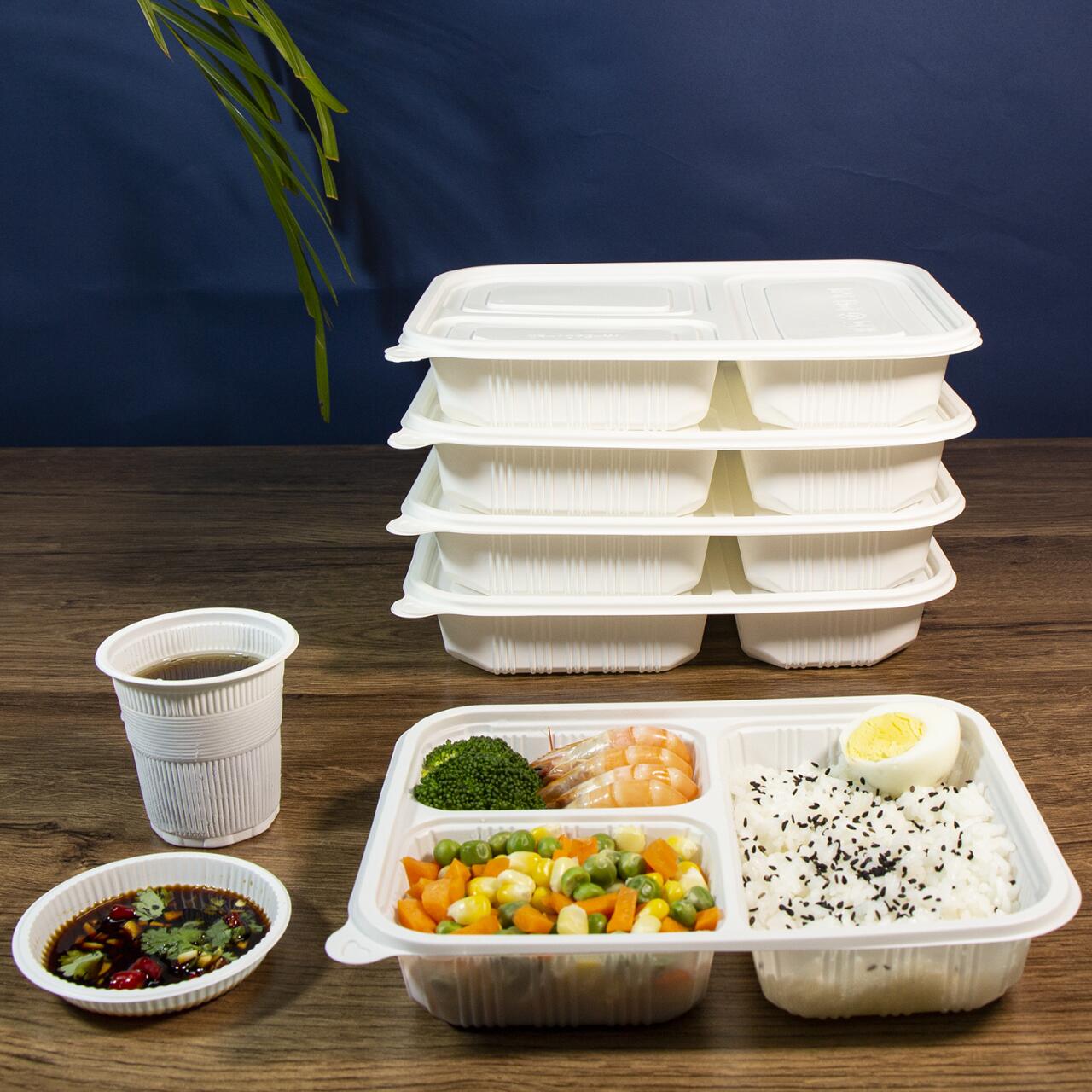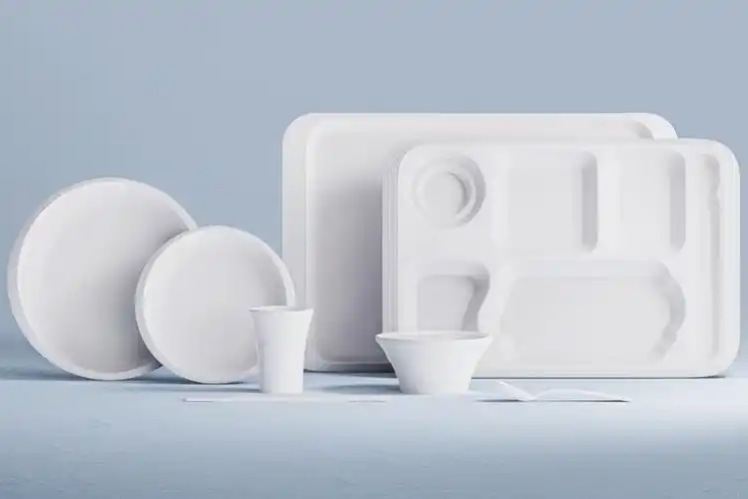At a time when global environmental awareness is rising and the plastic pollution crisis is becoming increasingly severe, tableware made of degradable materials has become the focus of the industry. Among them, PLA (polylactic acid) tableware is experiencing a rapid development process due to its unique advantages. The rise of PLA tableware is not accidental, but the result of multiple factors.
Environmental protection policies and regulations: rigid constraints and clear guidance
In recent years, governments have introduced strict environmental protection policies to curb the spread of plastic pollution. As one of the world’s largest consumer markets, China has implemented a series of environmental protection policies intensively since the “dual carbon” goal was proposed. The “Opinions on Further Strengthening Plastic Pollution Control” clearly stipulates that by 2025, the use of non-degradable plastic tableware in the takeaway field in cities at or above the prefecture level must be reduced by 30%. This policy is like a baton, pointing the direction for the catering industry, prompting a large number of companies to turn their attention to degradable PLA tableware. The European Union is also not to be outdone. Its “Disposable Plastics Directive” requires that by 2025, all disposable tableware must use at least 50% recycled materials or degradable materials. PLA materials have good biodegradability and have become an important choice for tableware manufacturers in the EU market. These policies and regulations not only restrict the use of traditional plastic tableware, but also create a broad policy space for the development of PLA tableware, becoming a powerful booster for its development.
Market demand: dual pull of consumption upgrading and environmental protection concept
The awakening of consumers’ environmental awareness is a key factor in the growth of market demand for PLA tableware. With the convenience of information dissemination, consumers’ awareness of the harm of plastic pollution continues to deepen, and they are more inclined to choose environmentally friendly products in their daily lives. In particular, the younger generation of consumers, such as Generation Z, have a high acceptance and pursuit of green and environmentally friendly products, and are willing to pay a certain premium for the use of environmentally friendly tableware. The booming takeout industry has also brought huge market opportunities for PLA tableware. Taking China as an example, according to data released by iResearch Consulting, the scale of China’s takeout market has exceeded 1.8 trillion yuan in 2024, a year-on-year increase of 18.5%. It is expected to exceed 3 trillion yuan by 2030, with an average annual compound growth rate of more than 12%. The huge volume of takeout orders means a huge demand for tableware. Traditional plastic tableware is gradually abandoned by the market under environmental pressure. PLA tableware has become the new favorite in the takeout industry due to its degradable characteristics. At the same time, the application of PLA tableware has also played a good demonstration role in large-scale events and activities. The 2022 Beijing Winter Olympics fully adopted PLA lunch boxes, knives and forks, etc., using their degradable characteristics to reduce the carbon footprint of the event, showing the advantages of PLA tableware to the world, and further stimulating the market demand for PLA tableware.
Material performance and technological innovation: breaking through bottlenecks and improving competitiveness
PLA materials themselves have many excellent properties, laying the foundation for their application in the field of tableware. PLA is made of crops such as corn and cassava through fermentation and polymerization. After being discarded, it can be completely degraded into carbon dioxide and water under industrial composting conditions within 6 months, without producing microplastics or harmful substances. Moreover, its acidic polymer characteristics have an antibacterial rate of 95% against common bacteria such as Escherichia coli. At the same time, it does not contain harmful ingredients such as bisphenol A and plasticizers, meets food contact safety standards, and has passed international certifications such as FDA. However, PLA materials have deficiencies in heat resistance (usually -10℃~80℃), hardness and water resistance, which limits their wider application. To break through these bottlenecks, researchers and enterprises have increased their R&D investment.In terms of process optimization, precise control of crystallinity, such as adjusting the cooling rate and annealing treatment, can reduce degradation active sites and improve product quality. Technological innovation not only improves the performance of PLA tableware, but also reduces production costs. With the continuous maturity of production technology, the scale effect gradually emerges, and the price of PLA particles gradually decreases from 32,000 yuan/ton in 2020 to 18,000 yuan/ton predicted in 2025, which makes PLA tableware more competitive in price and further promotes its market popularity.
Collaborative development of the industrial chain: upstream and downstream linkage to ensure supply
The development of PLA tableware is inseparable from the collaborative efforts of upstream and downstream of the industrial chain. On the upstream raw material supply side, with the growth of market demand, more and more companies are engaged in the production of PLA raw materials. For example, the 200,000-ton PLA project planned by domestic companies such as Wanhua Chemical and Jindan Technology is expected to be put into production in 2026, which will effectively reduce my country’s dependence on imported PLA particles and ensure a stable supply of raw materials. In the midstream manufacturing link, companies continue to introduce advanced equipment and technology to improve production efficiency and product quality. Some leading companies have deployed overseas production bases, such as Yutong Technology, which has made Southeast Asia a key area for its production capacity layout, accounting for 45% of its total production capacity, in order to cope with the pressure of domestic environmental protection policies and rising costs. At the same time, through vertical integration of raw material supply, self-built PLA modified production lines, and maintained a high gross profit margin. Downstream channels are also actively cooperating. Meituan and Ele.me, the catering takeaway platforms, have mandatory requirements for new merchants to use degradable packaging from 2025. The proportion of degradable tableware procurement by chain catering brands has increased from 28% in 2023 to 63% in 2025, promoting the widespread application of PLA tableware in the terminal market. The close cooperation between upstream and downstream of the industrial chain has formed a virtuous circle, providing a solid guarantee for the sustainable development of PLA
Post time: Jun-12-2025












